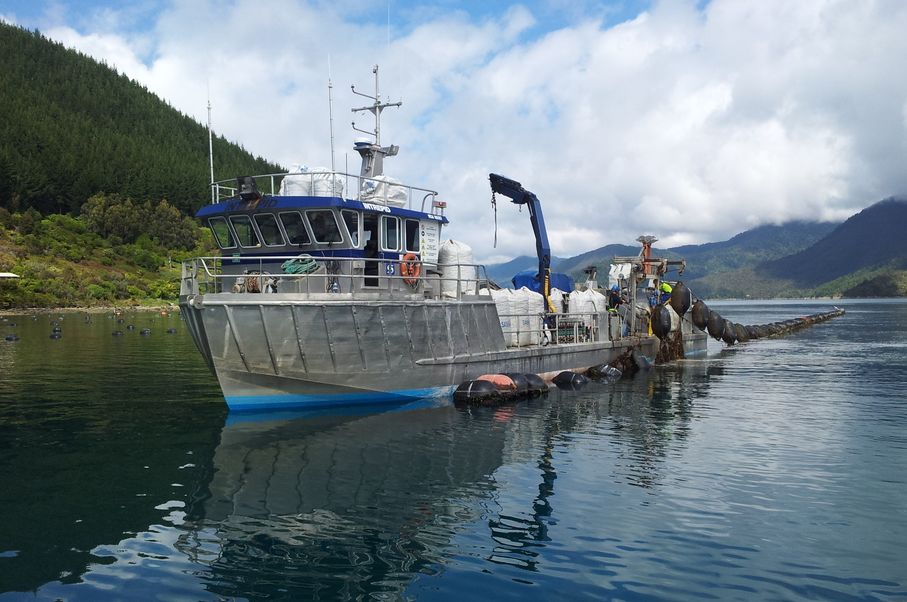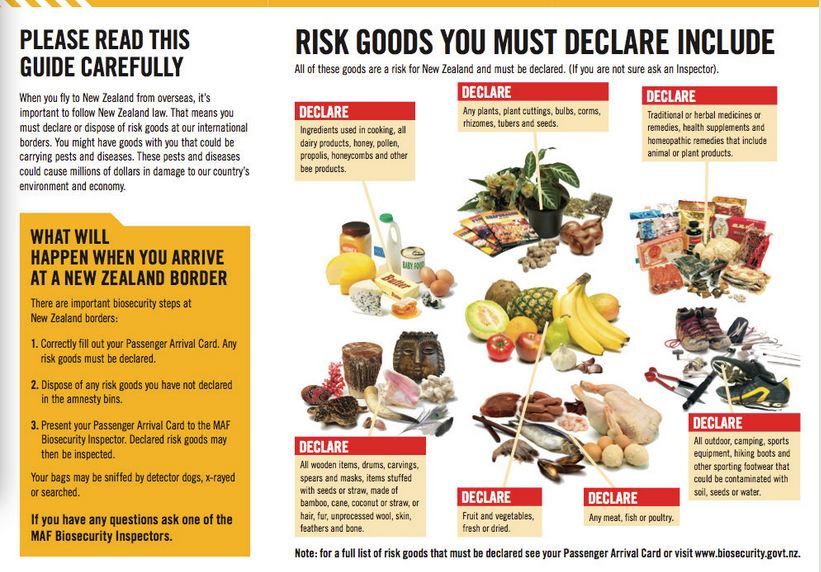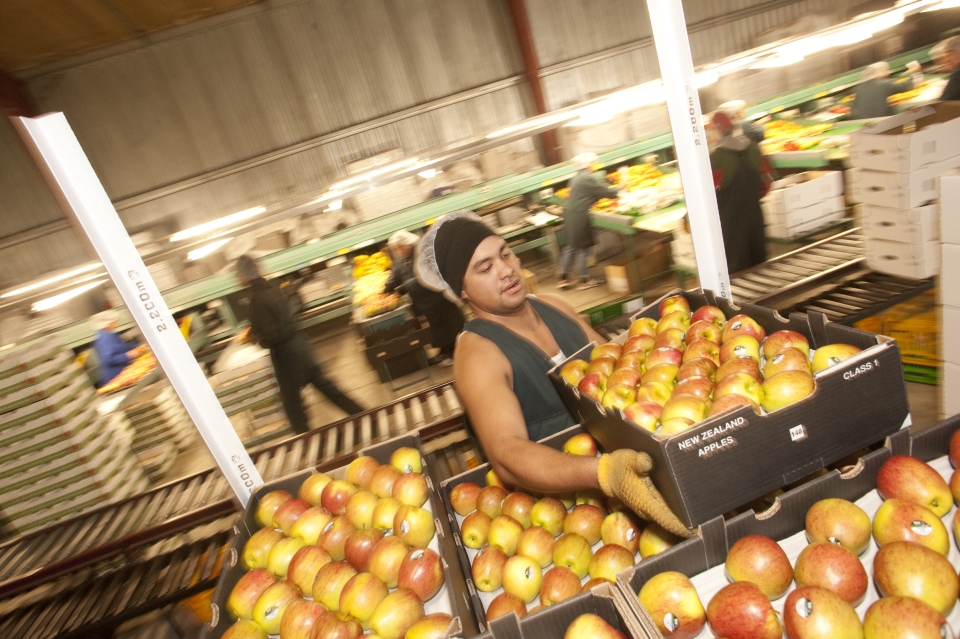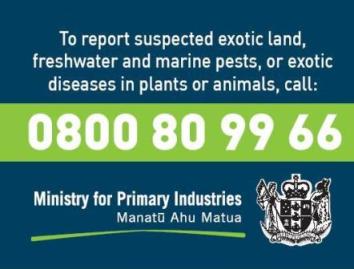New Zealand has many unique ecosystems. Our native species adapted to an environment without mammals and their habits and behaviours helped them to thrive in that environment. Many new species arrived with humans, including predators and pests. Now these introduced predators and pests threaten the survival of our native species and the success of our primary industries.
Biosecurity helps to prevent or reduce any damage caused by unwanted organisms.
What is biosecurity?
Biosecurity is about keeping New Zealand free of unwanted organisms. This means controlling, managing or eradicating them should they arrive in the country. Biosecurity in New Zealand includes a set of measures designed to protect our country from the entry and spread of pests and diseases. Anything that is brought into New Zealand or moved around New Zealand could introduce or spread harmful pests and diseases. This is why biosecurity is everyone’s responsibility.
Biosecurity is also about making sure that New Zealand does not send pests or diseases into other countries when we export goods. Pests and diseases are a risk to:
- The economy – our primary industry exports generate over 36 billion dollars each year.
- Environment – New Zealand is an isolated country with unique plants and animals that have evolved over millions of years. Our biodiversity is at risk if pests and diseases enter the country.
- Cultural and social values – pests and diseases could change the way we are able to use our environment. For example, aquatic weeds could stop people from using our waterways for recreation or for gathering food.
- Human health – pests and diseases can impact on our health.
What makes a pest a ‘pest’?
A pest or a weed is an unwanted organism. They are not only introduced by people, they can arrive on their own. Or, they might have always been here but conditions have changed their environment in a way that has allowed them to spread and displace other species. A pest is only a pest if it is unwanted, so it’s about where the organism is and what role it is taking in the ecosystem – for example possums are protected in Australia and are a pest in New Zealand.
Both native and introduced species can be pests in New Zealand. They are a significant threat to our native plants, animals and natural habitats, as well as non-native plants and animals such as household pets, farm animals, and garden, orchard and crop plants. Plant pests threaten our native plants by smothering, strangling or crowding them out. Eventually plant pests can take over our forests and wetlands. Many are also a nuisance to farmers, in home gardens and may cause health problems for some people.
You can find out more about some common weeds here.
Animal pests threaten our region's native ecosystems, such as forests and wetlands. Some animal pests, such as feral goats and possums, destroy plants by eating their leaves, flowers or fruit. Other animal pests, such as stoats and rats, eat our native bird chicks and eggs. They also eat native lizards, frogs and insects. Many animal pests are also a nuisance to farmers, in suburban gardens and businesses. For example, goats create erosion on riverbanks, and possums carry bovine tuberculosis (Tb). Bovine Tb is a disease that affects farm animals and threatens our export markets.
You can find out more about animal pests here.
Pest fish also affect our waterways, such as lakes and rivers.
Some biosecurity threats that already exist in New Zealand include:
- didymo
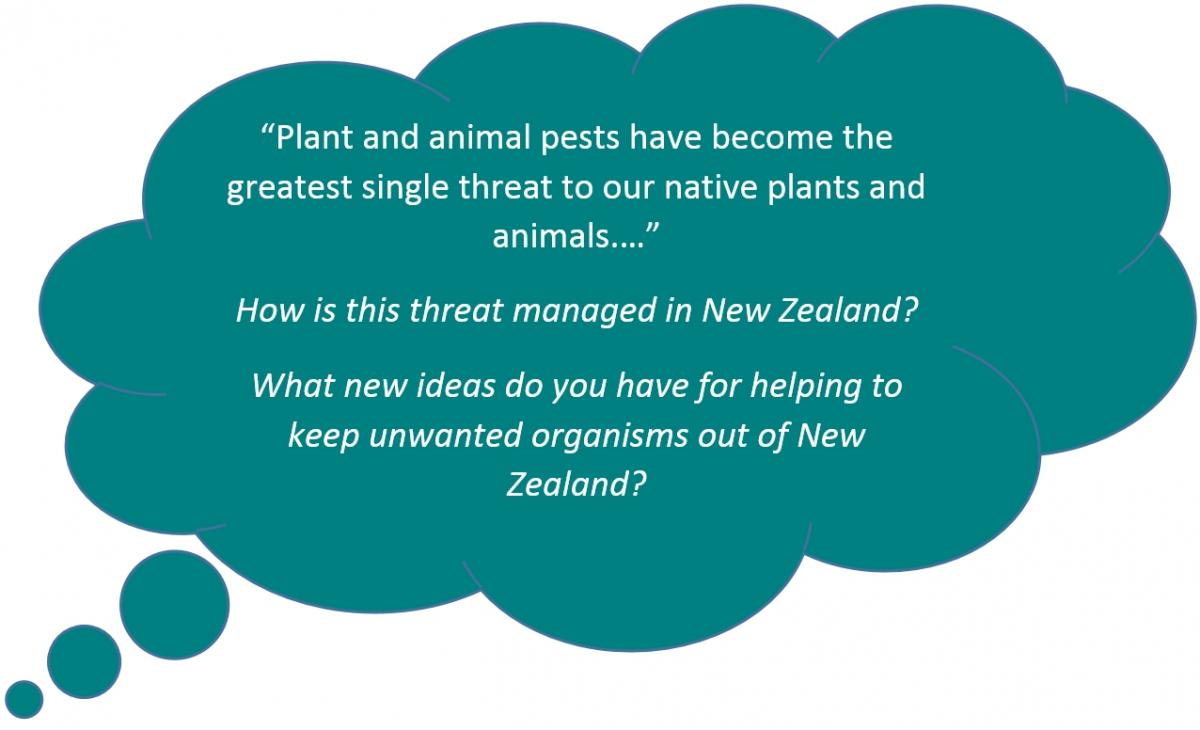
- kauri dieback disease
- common and German wasps
- introduced predators such as possums, stoats, ferrets, weasels, wild cats and rats.
- myrtle rust, a fungus which affects the Myrtle family including pōhutukawa, rātā, kānuka, mānuka and feijoa.
The Ministry for Primary Industries manages biosecurity in New Zealand.
You can help
Keep a watch for anything that could be an unwanted pest or disease.
Report any sightings to the MPI free 24-hour emergency hotline 0800 80 99 66.
Ready for a quiz? Try the "Biosecurity" interactive activity.

